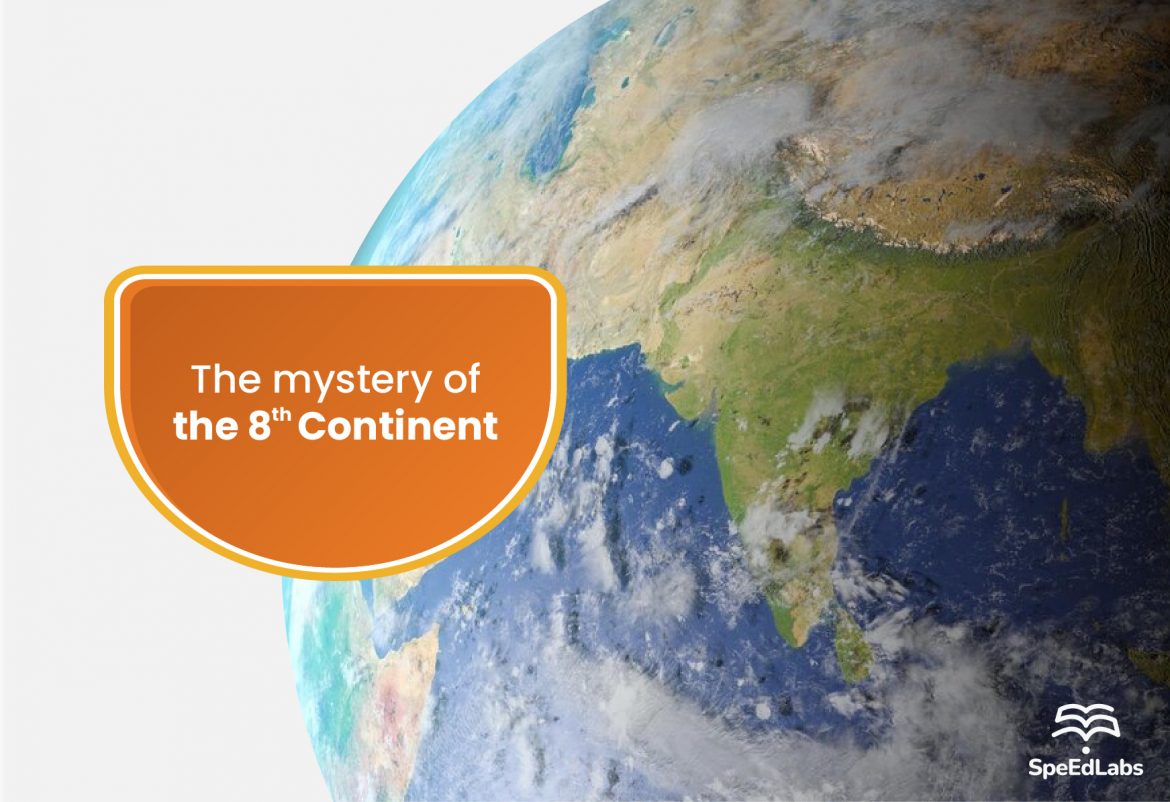According to what we have been learning till now, there are 7 continents, right? What if you got to know that there could be the 8th continent too? Let’s dive into the mystery of the eighth continent.
Geologists recently discovered a large fragment of land deep in the South Pacific Ocean that had been forgotten for a long time. The problem is that nearly all of it is underwater, with only a few islands, such as New Zealand, protruding from the depths. And with that, we now have proof of an eighth continent (or so) – which had been hiding in plain sight all along!
A piece of land 2 million square miles in size, about half the size of Australia, lies 3,500 feet beneath the South Pacific.
Is it the Eighth Continent?
Scientists disagree about whether Zealandia, a submerged landmass, is a continent or not. In 2017, a group of geologists declared it to be one, but not all scientists agree.
While the definition of a continent is debated, scientists believe it should have clearly defined boundaries, cover more than one million square kilometers, be elevated above the surrounding ocean crust, and have a continental crust that is thicker than the oceanic crust.
Zealandia satisfies all of these requirements. Zealandia might as well stand out as a high-standing plateau above the ocean floor if the ocean were to be drained!
History
Sir James Hector, a Scottish naturalist, gathered the first real evidence of Zealandia’s existence in 1895 while on a voyage to survey a group of islands off New Zealand’s southern coast. He concluded that New Zealand is “the remnant of a mountain-chain that formed the crest of a great continental area that stretched far to the south and east, and that is now submerged…” after studying their geology.
Despite this early breakthrough, knowledge of a possible Zealandia remained a mystery until the 1960s, when little happened. “In this field, things move pretty slowly,” says Nick Mortimer, a geologist at GNS Science who led the 2017 research.
Then, in the 1960s, geologists finally agreed on what a continent is: a geological area with a high elevation, a diverse range of rocks, and a thick crust. It must also be large. “You can’t be a tiny piece,” Mortimer says. This provided geologists with something to work with: if they could gather enough evidence, they could prove the existence of the eighth continent.
When the continent was finally revealed to the rest of the world, it unlocked one of the world’s largest maritime territories. “If you think about it, every continent on the planet has different countries on it,” Mortimer says, “but there are only three territories on Zealandia.”
In addition to New Zealand, the continent includes the French colony of New Caledonia, which is known for its dazzling lagoons, as well as the Australian territories of Lord Howe Island and Ball’s Pyramid. One 18th-century explorer described the latter as appearing “not to be larger than a boat.”
Origin of the Eighth Continent
Zealandia was once a part of Gondwana, an ancient supercontinent that spanned the southern hemisphere and essentially lumped all of the continents together about 550 million years ago. On the eastern side, it shared a corner with several other countries, including half of West Antarctica and all of eastern Australia.
Key Takeaways
The question of this 8th continent has divided Geologists into two groups- One, who are ready to accept it as a continent and others who are not.
There is no governing body that approves or disapproves of the creation of new landmasses on the planet. The very definition of a continent is still up for debate; Zealandia’s status as a continent, pending wider scientific acceptance, could mean that continental bodies don’t have to be above water to be considered continents. Although Zealandia is unlikely to become a household name, it can be used by researchers all over the world to learn more about the Earth’s past, the movement of tectonic plates millions of years ago, and how the formations of New Zealand and New Caledonia came to be located above the Pacific Ocean’s waters.
Zealandia meets all of the criteria for being a continent, according to a group of geologists. It is more accurately described as a submerged continent than as a microcontinent. However, as more research is conducted, several discoveries are made. It’s past time for the maps to catch up and recognise Zealandia as the eighth continent.
Also published on Medium.
